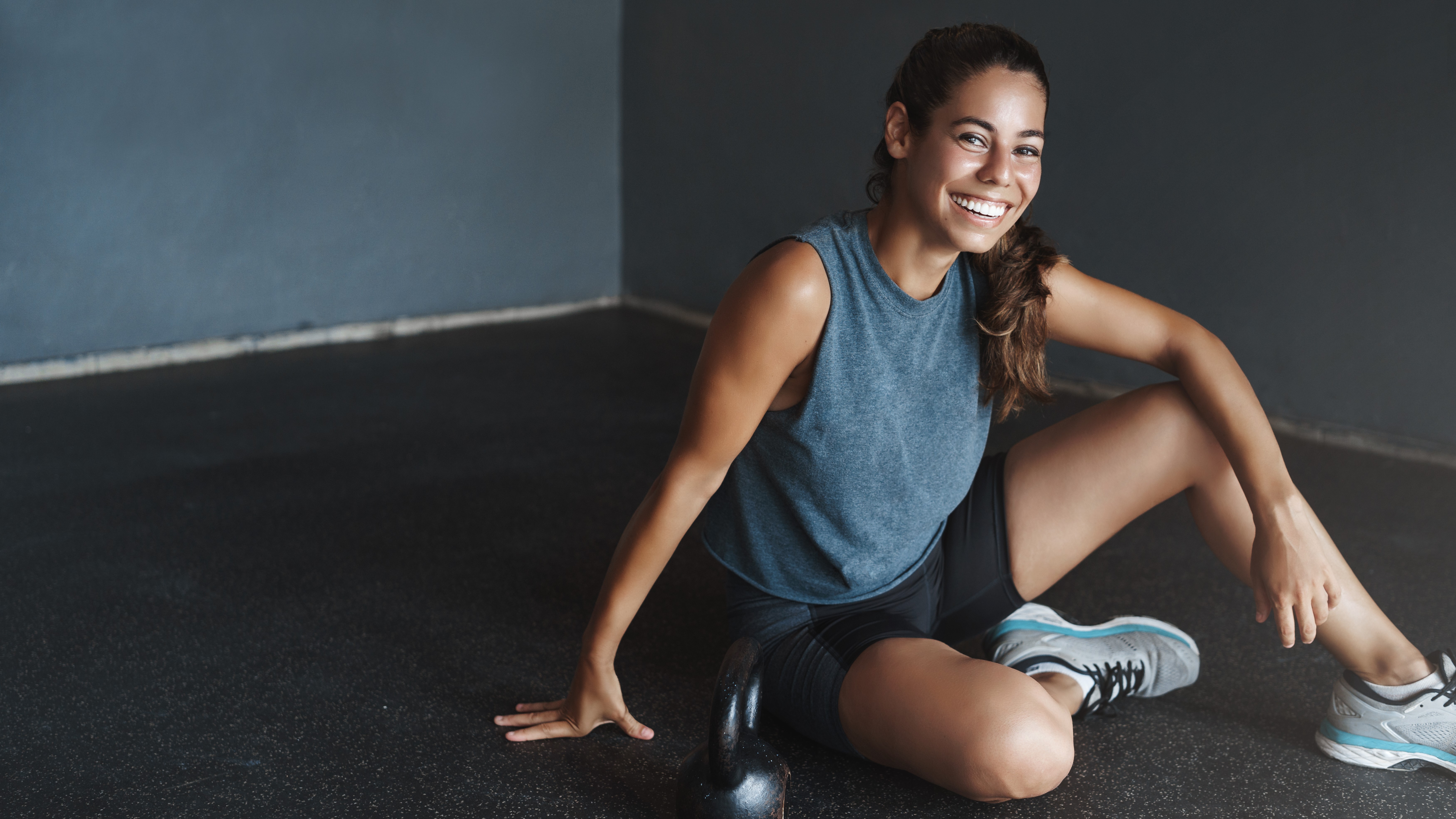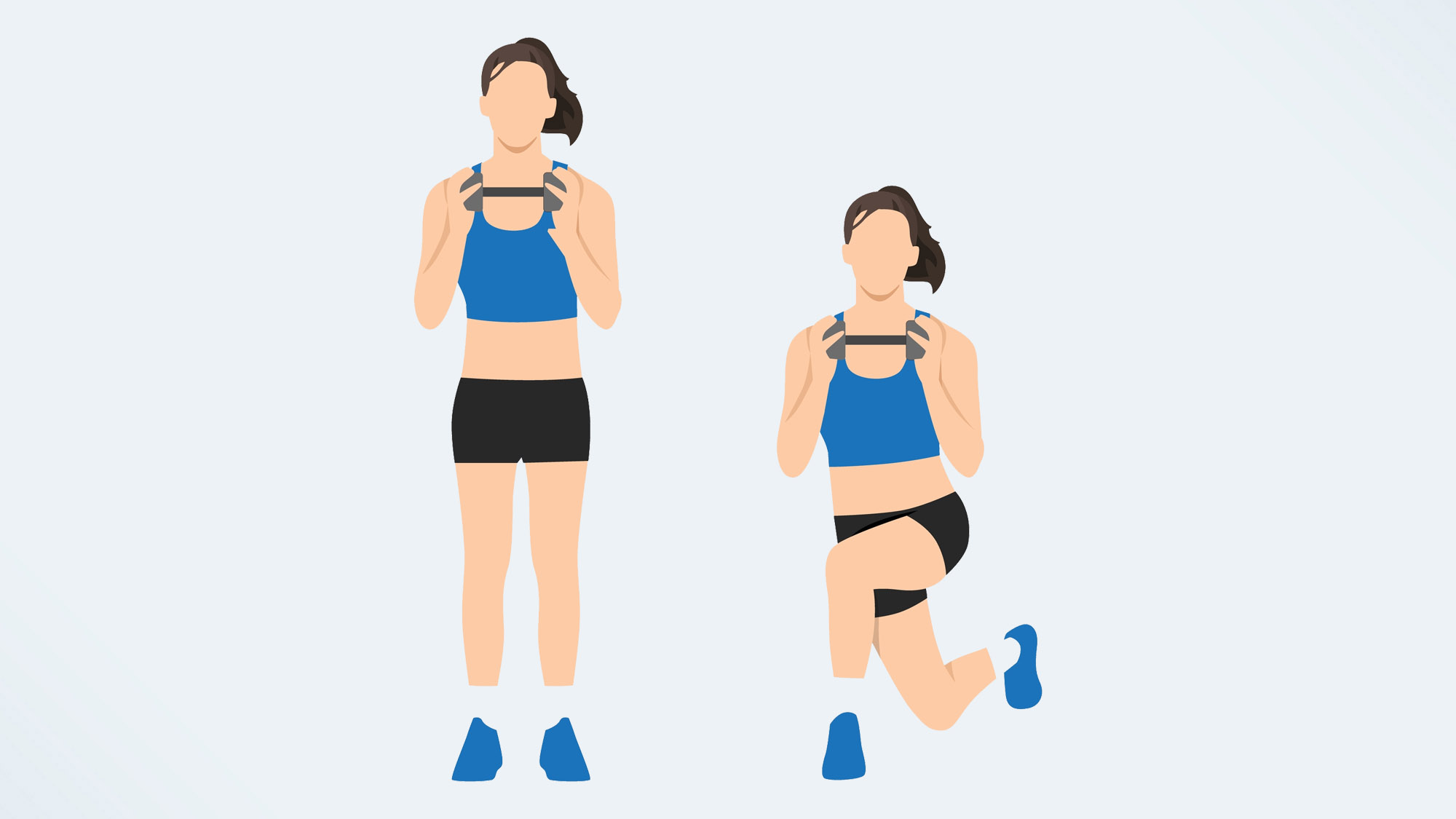I did 100 curtsy lunges a day for a week — here are the results
Are curtsy lunges the secret to stronger legs?

I’ll let you in on a secret — I’ve never been a fan of the curtsy lunge. Sure, I know it engages more muscles than the standard lunge, but on leg day, I’d rather stick to regular lunges or weighted squats to work my glutes. Yet next up on my list of weird and wonderful workout challenges is the curtsy lunge, so in the name of good journalism (and stronger glute muscles) I put my dislike to one side, and took a deep dive into this move. Read on to find out what happened.
The curtsy lunge gets its name after the traditional method of greeting, but you don’t need to have a member of the Royal family in sight to practice this move. It’s a compound exercise that targets the same muscles as a traditional lunge — your glutes, hamstrings, and quads, but it also works your inner thighs, and the gluteus medius, which is often underactive, especially if you spend a lot of time sitting down. If that’s you, check out the best exercises to do if you sit down all day here.
As a reminder, no personal trainer on the planet would recommend doing 100 reps of the same exercise day after day. For this week-long challenge, I didn’t do other leg exercises to avoid over training my muscles, but normally, I’d only train my legs once per week. Your muscles need adequate rest to recover between workouts. If you’re new to exercise, or returning to exercise following an injury, it’s a good idea to check your form with a personal trainer before adding weights or reps to your workout.
How to do a curtsy lunge

Let’s start by looking at how to do a curtsy lunge:
- Start with your feet shoulder width apart, your arms down by your sides, and your gaze focused forwards in front of you.
- Step your left leg back and around behind your right leg, shifting your weight onto your right side, and step down into a lunge. At the same time, bring your arms up towards your chest, keeping your torso upright, and engage your core.
- Lunge down until your right thigh is parallel to the floor, then straighten back up on your right leg, pushing from your heel, and return your left leg to it’s starting position.
- Repeat all your reps on one leg, before switching sides.
Remember, both toes should be pointing forward during this exercise, as should your hips. If you feel you’re getting twisted, or you find your knees hurting during this move, it’s a good idea to get a personal trainer to check your form. The step out and back doesn’t need to be too exaggerated — your back knee can be in line with your front foot, or a few inches outside it.
I did 100 curtsy lunges a day for a week — here’s what happened
But what would happen if you did 100 a day for a week? To find out more, I unrolled my yoga mat and gave them a go. Here’s my day-by-day progress:
Day 1
I started this week-long challenge with all the gusto it deserved. I decided to break up the reps into five sets of 20 reps, 10 each side. To really get to grips with the exercise, I decided to leave my best adjustable dumbbells to one side, and just use my bodyweight for the first 100 reps. By the end of day one I could definitely feel a twinge in my hip flexors, and my inner thighs. As a runner, and someone who sits behind a desk for half of my working day, I often struggle with tight hips, so perhaps this challenge would be the perfect way to stretch and strengthen them.
Sign up to get the BEST of Tom's Guide direct to your inbox.
Get instant access to breaking news, the hottest reviews, great deals and helpful tips.
Days 2 and 3
For the next two days, I continued to curtsy squat, this time adding weight to the exercise to up the intensity. On day two, I held a kettlebell against my chest as I lunged. I asked a personal trainer to check out my form, and she reminded me to keep my core engaged as I moved, keeping my torso upright and facing forward.
On day three, I grabbed a set of dumbbells and held one in each hand as I went through my reps. By my final set of 20, I realized I’d been too ambitious as I noticed my torso leaning forwards slightly — by leaning forwards in the move, you make the exercise slightly easier and remove some of the activation in the glutes, so it’s important to stay upright. I swapped down to lower-weight dumbbells for my final few reps.
Day 4
By day four of this challenge, I could definitely feel the endless reps in my inner thighs. I was also marathon training during this week, and opted to split my lunges up — 50 before I went out for a run, and 50 when I got back. I found doing the lunges before heading out the door helped me ‘switch’ my glutes on a little more during my first few miles.
As a runner, one of the benefits of curtsy lunges is that they train your body in a transverse plane of motion, unlike traditional lunges and squats that focus on the sagittal plane of motion. When you’re running, you often have to move quickly to one side to avoid a kid on a bike, or a person on the side walk — strengthening these muscles will hopefully help me avoid injuries in the future.
Day 5
By day five, I was getting bored, but noticing small improvements — I was able to move more naturally, and felt a lot more confident in the move. I’d also noticed my weaker left side was getting a little stronger. Like traditional lunges, curtsy lunges are a unilateral exercise, meaning they work one leg at a time, helping you notice any imbalances in the body.
Day 6
On day six, I texted my personal trainer friend and asked her for some modifications — I was bored, and couldn’t face another 100. She told me to try something different and elevate my front foot a few inches off the ground, stepping on a weight plate (or yoga block if you’re working out at home). This allowed me to increase the depth of my lunge, and 100 reps later, my inner thighs were on fire.
Day 7
By day seven, I was glad the end was in sight. To go out with a bang, I decided to try two more variations: for the first 50 reps, I did curtsy lunge pulses — lifting up a few inches, then back down for each rep. For the last 50 reps, I dropped my kettlebell and did curtsy lunges with a leg kick — after I had lunged back, I lifted back up on my front leg and kicked my back leg out to the side with control.
What did 700 reps teach me? First, in my case, when I loathe an exercise it’s often because I’m not very good at it. If these week-long challenges have taught me anything, it’s the benefits of slowing down and really honing in on my form sometimes. Second, that I was wrong to dislike this exercise — it’s brilliant at working the inner thigh muscles, glutes, and hip flexor muscles. I’ll definitely be keeping them in my leg day routines. Just not as many.
More from Tom's Guide

Jane McGuire is Tom's Guide's Fitness editor, which means she looks after everything fitness related - from running gear to yoga mats. An avid runner, Jane has tested and reviewed fitness products for the past five years, so knows what to look for when finding a good running watch or a pair of shorts with pockets big enough for your smartphone. When she's not pounding the pavements, you'll find Jane striding round the Surrey Hills, taking far too many photos of her puppy.
